In case you don’t know, bears show different behaviors during human interactions. In some instances, they can be aggressive and will attack you. And because bears are extremely huge, they can kill you instantly. Fortunately, you can fight back using any weapon you have or even with your own bare hands. You can also shoot the bear.
But are you allowed to shoot a bear in self-defense? Yes, you are allowed to defend yourself from a bear by shooting it. In fact, you can also kill a bear if the animal is attacking your property. However, you should prove to the court that the bear is in the process of attacking when you shoot the animal. Otherwise, you might get arrested.

According to US law, the term “property” includes dwelling (permanent or temporary), a vehicle including aircraft and boat, a domesticated animal, or anything that has a substantial value to the owner and is being used for survival and livelihood. However, you should first understand how bears behave in different situations.
Which Bear Is Most Aggressive?
So far, there are three types of bears that can be found in North America – polar bears, American black bears, and brown bears, which include the grizzly bears. All of them belong to “Ursus,” a genus in the Ursidae family. Ursus is the Latin word for bears. They may look similar in most ways, but they differ in size, color, habitat, diet, and behavior. Below are the different types of bears:
Polar Bear

Scientifically known as “Ursus maritimus,” polar bears are currently listed as threatened under the Endangered Species Act. Their global population is estimated to be about 26,000 only. In the US, they are believed to be found only in Alaska. These marine mammals usually feed on ringed seals, bearded seals, beluga whales, and walrus.
In general, polar bears are not territorial animals. Despite being dubbed as the largest terrestrial predator in the world, they are not as aggressive as American black bears and brown bears. When confronted, they usually prefer to escape rather than fight. But as apex predators, they still hunt humans as food and will attack if hungry or provoked.
American Black Bear

On the other hand, American black bears are the smallest among the three bear species in the US. They are not to be confused with Asian black bears (Ursus thibetanus), which are only found in Asia. Aside from black, some American black bear subspecies’ colors are cinnamon, blue-black, brown, dark brown, and white (Kermode bears).
Scientifically known as “Ursus americanus,” American black bears are also not territorial. However, it doesn’t mean they are not dangerous. Just like the other bear species, they are aggressive when provoked or if a human is too close to them. But unlike brown bears, they are shy. Their attacks are rare and don’t usually end up in serious injuries.
Brown Bear
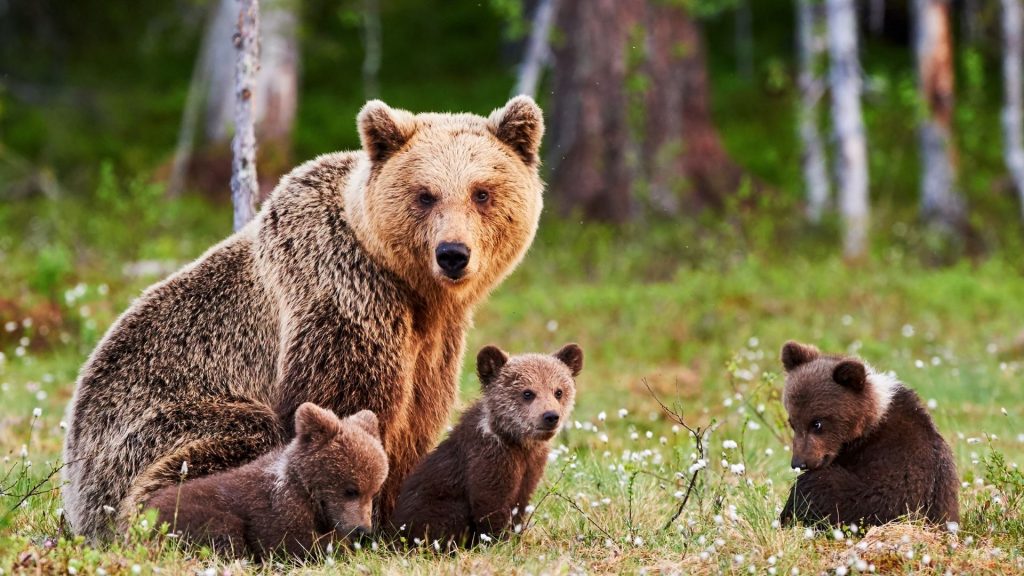
Meanwhile, brown bears are more aggressive than polar bears. Scientifically known as “Ursus arctos horribilis,” brown bears can also be found in the forests and mountains of Europe, Asia and is the most widely distributed bear in the world. Grizzly bears, which are subspecies of the brown bear, are very aggressive, especially mothers with their cubs.
Alaskan brown bears eat almost anything, including beaver, caribou, deer, salmon, as well as carcasses of small mammals. Nevertheless, they also love to eat flowers, fruits, grasses, herbs, and roots. Kodiak bears, which are a unique subspecies, are the largest in the world and are considered the most aggressive bears.
Do Bears Defend Themselves?
Yes, bears defend themselves not only from humans but also from fellow predators. They use their powerful forearms, very sharp claws, and incisors (front teeth), and strong jaws. Their size and strength can easily take down any predator and kill humans. Interestingly, they also stand on their hind legs so they can look bigger.
But in most cases, bears may not fight back and will escape, especially from humans. Instead of attacking, they usually make a bluff charge to scare their attackers. Being excellent climbers, bears can climb trees very fast with the help of their curved claws and strong grip. Amazingly, they can walk down a tree with their rear legs in the lead.
How Do You Know When a Bear Is Near?
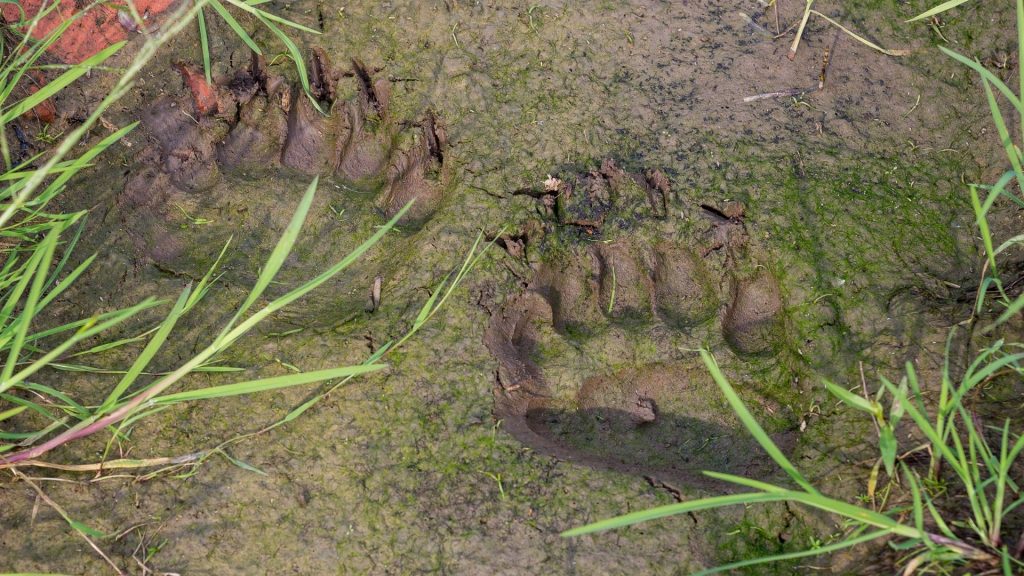
You may not see a bear, but it doesn’t mean it is not near you. It’s quite hard to smell if there’s one behind you. This is because bears don’t have a stinky smell even if they eat animals and carcasses. In fact, they smell clean and fresh. Bear feces don’t smell that bad, either. So to know if there could be a bear nearby, here are some signs you should know:
1. Bear Tracks
Bears don’t usually leave distinct tracks unless they walk through snow or mud. They have five toes on each of their four feet and walk flat-footed like humans. Their large toe is on the outside part of the foot. At the same time, their smallest toe is on the inner part and may not always be seen on the tracks. Their front tracks are obviously wider than rear tracks.
2. Bear Marks on Trees
Regardless of age, sex, and species, bears rub their scents on trees, utility poles, and wooden signposts to communicate with other bears – to share health status, sex, mating status, and others. To mark trees, bears rub their necks and shoulders; leave horizontal claw marks and bite marks. Their bites are deep enough to wound the tree.
3. Bear Droppings
Black bear droppings or scat are about 5 – 12 inches long and 1.5 – 2.5 inches in diameter. Poop from brown and grizzly bears is a bit wider. In general, bear poop has no foul smell, and the color usually depends on what the bear ate. So if the bear ate grass, its poop is green. If the bear ate a mixture of food, the poop might be black or brown.
Is It Legal to Shoot Hibernating Bears?
Yes, it is currently legal to shoot a hibernating bear. This is after former US President Donald Trump signed a law allowing hunters to shoot bears while they are under hibernation period. The law, which took effect on June 9, 2020, also covers mother bears and their cubs. The most affected areas are the federally protected national reserves in Alaska.
The said law includes allowing hunters to bait bears and use artificial light to help them hunt bears. During this period, bears are in their most vulnerable condition. This includes having slower blood flow, heart rate, and metabolic rate. Consequently, these gigantic mammals tend to become slow in waking up and running and, therefore, easier targets.
Are Bears Aggressive to Dogs?
Generally speaking, bears are not aggressive to dogs. They may only attack to defend their cubs or when they are cornered. Bears are carnivorous and can kill dogs, but they rarely eat them. As it turns out, it is the bear that usually runs away when a dog chases them. In fact, even very small dogs can scare a 500-pound American black bear away.
However, bears know when a dog is tied or inside their pens. At this point, they just ignore the dog and let it bark at them. On the other hand, provoked bears may also attack dogs and dog owners. In most instances, a mother bear turns aggressive to a mad dog while trying to protect her cubs. Nevertheless, bear attacking dogs is very rare.
How Can You Protect Your Dogs From Bears?
As mentioned earlier, it is legal to shoot a bear while it is attacking you or your pet dog. But as a responsible dog owner, it is still better to prevent your dog from encountering a bear. So, if you are living in a bear county or would like to bring your dog to a campsite where there could be bears, here are some helpful tips to protect your dogs from bears:
- Keep your dog on a leash. Again, bears tend to ignore dogs on leash because they know that the dogs cannot chase them.
- Secure outdoor garbage, especially at night. Bears are mostly active at night, and they look for food in garbage cans.
- Feed your dogs inside the house. Bears can easily smell pet food outside your house. If you feed your dog outside, clean the area immediately afterward.
- Build high and strong fences. Use livestock fencing or an electric fence. Make sure it is properly constructed and is safe for humans.
- Never leave your dogs unattended. Most campsites prohibit leaving unleashed dogs inside a tent alone. A barking dog may also provoke a bear to attack.
- Always keep your campsite clean. Don’t leave food, garbage, utensils, and other items that can attract bears.
- Bring noisemakers. Rattle, whistle, alarm, or any kind of noisemaker will alert bears about your presence. It will deter them from going closer.
- Always bring a bear spray. Bear spray repellent is proven better than shooting a bear. Always bring one while walking your dog or go hiking.
What to Do if a Bear Approaches You?
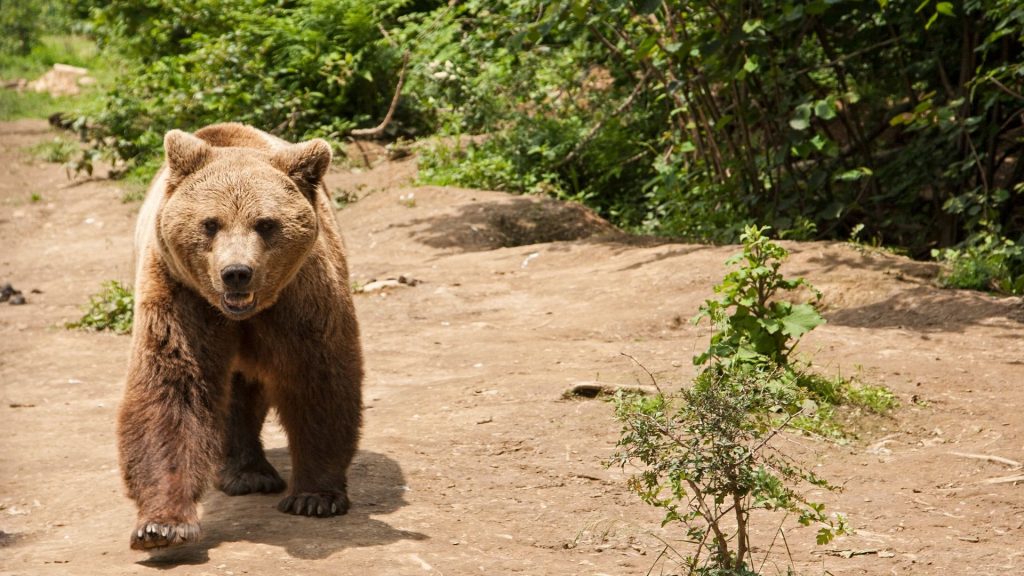
As previously mentioned, bears rarely become aggressive against humans. They may only attack if they feel threatened or provoked. Bear encounters also happen in several kinds, and each kind may have different approaches. The key is here is to know how to react properly. Here are some safety tips once a bear approaches you:
- Stay calm, stand your ground, and don’t run. Move away very slowly only if the bear stops approaching you.
- Don’t make eye contact. Instead, raise your arms (and jacket) very slowly to make yourself look bigger.
- If the bear goes closer to you in a calm way, talk softly, so the animal will realize that you are a human and not prey.
- Don’t be scared or attack if a bear stands in front of you. A standing bear means that the animal is just curious but not trying to scare you.
- Don’t scream when the bear growls, snap its jaws, move its front paws towards you, and puff to look bigger. Bears bluff charge or make a fake attack and will turn away.
How Do You Fight a Bear?
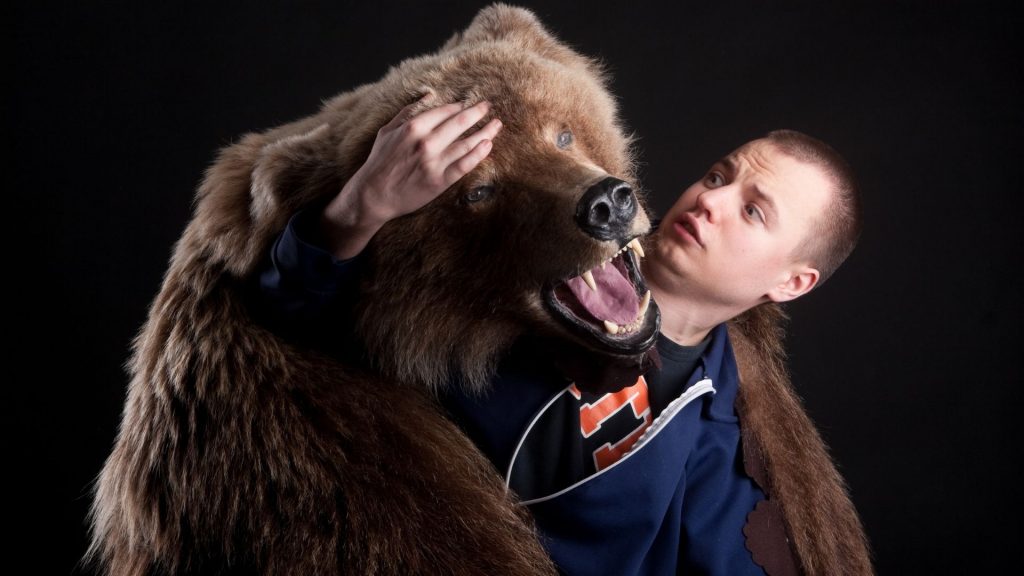
Fighting a bear will never be easy. Aside from their scary size, bears are very powerful and strong and can kill you instantly. But remember, they rarely start a fight with humans unless they are provoked. In fact, their only predators are humans and other bears. But if worst comes to worst, here are tips on how to fight with a bear:
- Don’t play dead, especially if the bear is already attacking you. Playing dead only works when a mother bear is trying to protect her cubs.
- Use a bear spray if a bear launches an attack at 25 – 35 feet away from you. For proper use, read the instructions on the label before buying.
- If the bear has made physical contact, fight with all your might. Use a knife, stick, rocks, a gun, or any improvised weapon. You can also punch or kick the attacking bear.
Where to Shoot an Attacking Bear?
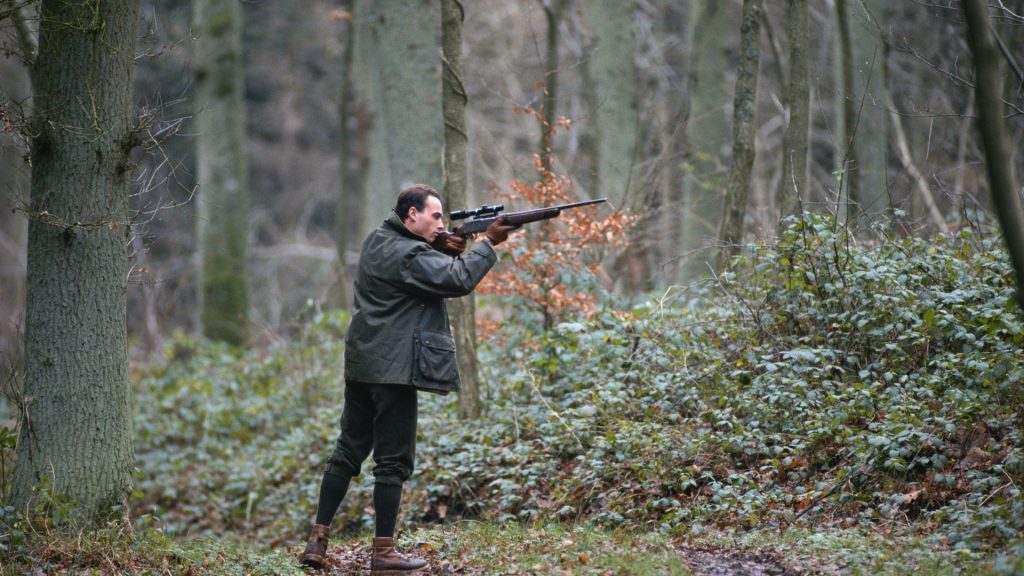
Shooting a bear as self-defense is allowed by law. Note, however, that a wounded bear will become more aggressive. A fast-incoming bear is also hard to shoot at, especially if you are not used to firing a gun. This is why using a bear spray is recommended instead. But if you have to shoot an attacking bear, make sure you wound it very badly or kill it.
Normally, you would want to shoot the head of the bear. However, most attacking bears lower their head so the upper part of the chest can be your next perfect target. You can also shoot at the bottom of the snout, throat, or neck so the bullet will also pass through the head. Once the bear drops dead, don’t go near it and call the authorities at once.
Will a Warning Shot Scare a Bear?
More often than not, a warning shot will not scare a bear, especially if it is in the process of attacking you. Instead, you are just giving him a better chance to kill you. If you want to scare a bear, the animal should still be far from you. Bears are usually scared of very loud noises such as yelling, banging pans, horns, alarms, and other noisy tools.
List of Sources
Staying Safe in Bear Country: Bear Spray & Firearms. (2018). National Park Service.
Bear Attacks. (2019). National Park Service.
Staying Safe Around Bears. National Park Service.
How to Identify Different North American Bear Species. (2011). Virginia Tech – College of Natural Resources and Environment.
Grizzly Bear Recovery Program: Grizzly Bear Biology. W.A. Franke College of Forestry and Conservation, U.S. Fish and Wildlife Service – University of Montana.
- How to Get Rid of Copperheads | Practical Guide - August 27, 2023
- How to Get Rid of Corn Snakes | What Makes Them Aggressive? - August 27, 2023
- How to Get Rid of Alligators | Safety Measures and Removal Methods - July 16, 2023
